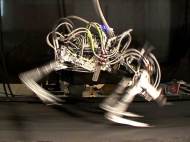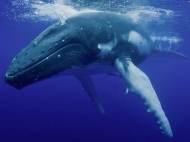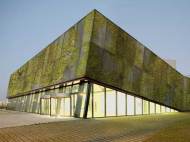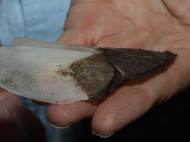Top 5 news and articles regarding bionics in 2012
 Bionics represents the application of biological methods and systems found in nature to the study and design of engineering systems and modern technology. In some cases it is also referred as biomimicry, biomimetics, bio-inspiration, biognosis, and it is close to bionical creativity engineering. Ranging from biomedicine, surgical robots, exoskeletons and artificial tissue, to robots, vehicles, and new materials and processes and inspired by flora and fauna, this is certainly an interesting category of our website.
Bionics represents the application of biological methods and systems found in nature to the study and design of engineering systems and modern technology. In some cases it is also referred as biomimicry, biomimetics, bio-inspiration, biognosis, and it is close to bionical creativity engineering. Ranging from biomedicine, surgical robots, exoskeletons and artificial tissue, to robots, vehicles, and new materials and processes and inspired by flora and fauna, this is certainly an interesting category of our website.
Here are the most popular 5 news and articles regarding bionics that were published in 2012:
5. Robot Cheetah sets new land speed record for legged robots
 As a part of DARPA’s Maximum Mobility and Manipulation program, which has a goal to create and demonstrate significant scientific and engineering advances in robot mobility and manipulation capabilities, engineers from Boston Dynamics developed Cheetah – a robot named after the animal it got inspired from that managed to beat the previous land speed record for legged robots.
As a part of DARPA’s Maximum Mobility and Manipulation program, which has a goal to create and demonstrate significant scientific and engineering advances in robot mobility and manipulation capabilities, engineers from Boston Dynamics developed Cheetah – a robot named after the animal it got inspired from that managed to beat the previous land speed record for legged robots.
Half a year later, the researchers modified the robot and managed to beat their own record by achieving a new robotic land speed record of 45.5 km/h (28.3 mph) for a 20-meter (65.6 ft) split. That version of the robot is powered by an off-board hydraulic pump and uses a boom-like device to keep it running in the center of the treadmill. The increase in speed was achieved due to improved control algorithms and a more powerful pump.
4. Mantabot – manta ray biomimicry for underwater vehicles
 Although they seem graceful while they glide in the water, manta rays are fast, highly maneuverable, energy-efficient, and well adapted to cruise on long distances in the deep, open ocean, and rest on the sea bottom. Researchers from University of Virginia and their colleagues from 3 other universities are developing an autonomous underwater vehicle that emulates the seemingly effortless but powerful swimming motions of rays.
Although they seem graceful while they glide in the water, manta rays are fast, highly maneuverable, energy-efficient, and well adapted to cruise on long distances in the deep, open ocean, and rest on the sea bottom. Researchers from University of Virginia and their colleagues from 3 other universities are developing an autonomous underwater vehicle that emulates the seemingly effortless but powerful swimming motions of rays.
The researchers are developing it since it could offer optimal silent propulsion with a minimum input of energy – a feature suitable for lower impact on the natural creatures around it, as well as for a stealthy surveillance tool for the military. The vehicle has potential commercial and military applications, and could be used for undersea exploration and scientific research.
3. Humpback whales inspire new helicopter rotor blade design
 Although helicopters are agile and able to take off vertically, their main rotor does contribute to some aerodynamic disadvantages. After observing humpback whales, a group of researchers at the German Aerospace Center in Göttingen have discovered and flight-tested a way to increase maneuverability and speed of helicopters. The findings could also improve the passenger comfort by lowering the resulting vibration caused by the main rotor.
Although helicopters are agile and able to take off vertically, their main rotor does contribute to some aerodynamic disadvantages. After observing humpback whales, a group of researchers at the German Aerospace Center in Göttingen have discovered and flight-tested a way to increase maneuverability and speed of helicopters. The findings could also improve the passenger comfort by lowering the resulting vibration caused by the main rotor.
Once perfected, the new blades could be installed on existing helicopters at little expense and the resulting contour could be milled into the front edges of existing titanium blade rotor blade designs.
2. Constructing “living” façades with biological concrete
 This news managed to grab a lot of attention since it managed to push through to the 2nd place just a week after it was published, and it is a group of researchers from Spaon whihc managed to develop a type of biological concrete that supports the natural, accelerated growth of pigmented organisms. The material has been designed for Mediterranean climates, and it is adapted to offer environmental, thermal and aesthetic advantages over other similar construction solutions.
This news managed to grab a lot of attention since it managed to push through to the 2nd place just a week after it was published, and it is a group of researchers from Spaon whihc managed to develop a type of biological concrete that supports the natural, accelerated growth of pigmented organisms. The material has been designed for Mediterranean climates, and it is adapted to offer environmental, thermal and aesthetic advantages over other similar construction solutions.
The researchers focused on two types of cement-based materials – carbonated concrete (based on Portland cement) and material manufactured with magnesium phosphate cement (MPC). Carbonated concrete is a material with a pH of around 8, while the material combined with MPC does not require any treatment to reduce its pH, since it is slightly acidic.
1. Arapaima fish scales inspire new materials
 After an expedition in the Amazon basin, a researcher from the UC San Diego wondered how arapaima fish manages to live in piranha-infested lakes. After investigation of its scales, the researchers found out that it combines a heavily mineralized outer layer with an internal design that helps the scale resist the piranha’s razor-like bite, and each of those scales is supported by a much softer collagen fibers stacked in alternating directions like a pile of plywood.
After an expedition in the Amazon basin, a researcher from the UC San Diego wondered how arapaima fish manages to live in piranha-infested lakes. After investigation of its scales, the researchers found out that it combines a heavily mineralized outer layer with an internal design that helps the scale resist the piranha’s razor-like bite, and each of those scales is supported by a much softer collagen fibers stacked in alternating directions like a pile of plywood.
UC San Diego started developing new materials suitable for armor and panels, and biomimicry of Arapaima’s complex scales could lead to new ceramics that are both tough and flexible, making them ideal for use in soldier’s body armor, fuel cells, insulation and aerospace designs.









Leave your response!